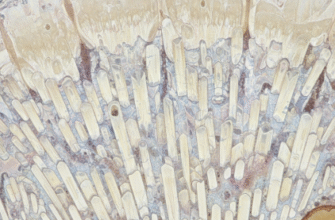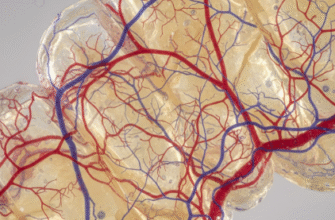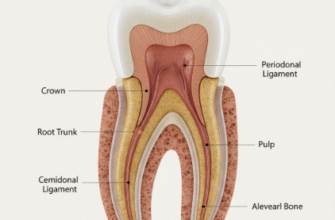Way back in the hidden depths of your mouth, operating far from the spotlight that your front teeth enjoy, lie a set of true biological marvels: your back molars. These aren’t the delicate slicers or the pointed piercers. No, your molars are the heavy-duty grinders, the powerful crushers, the ultimate food processing units meticulously designed by nature. They are the unsung champions of chewing, transforming every substantial bite you take into something your body can actually use. Think of them as your personal, highly efficient millstones, working tirelessly meal after meal.
Meet the Mighty Molars: Your Mouth’s Powerhouse Crew
So, what exactly are these titans of mastication? You typically have eight permanent molars, two on each side of your upper and lower jaws. If your wisdom teeth (also known as third molars) make an appearance, that number can go up to twelve. They are the most posterior teeth, strategically positioned for maximum leverage and force. Unlike the blade-like incisors at the front, designed for snipping, or the dagger-like canines, perfect for tearing, molars boast a dramatically different architecture. Their surfaces are broad, relatively flat, and complex, specifically engineered for grinding, crushing, and pulverizing.
Their size alone sets them apart. Molars are generally the largest teeth in your mouth, with a significantly wider chewing surface than any other tooth type. This expansive area is crucial for their role. They don’t just chop food; they systematically break it down, mashing and blending it with saliva to begin the digestive process even before it hits your stomach. They are the workhorses, built for endurance and power, handling the toughest food items with remarkable efficiency.
The Intricate Dance of Grinding: A Molar Masterclass
The grinding ability of molars isn’t just about brute force; it’s a sophisticated mechanical process, a true masterclass in biological engineering. It all comes down to their unique anatomy and how they interact.
Anatomy of a Superior Grinder
Take a closer look (if you can!) at the surface of a molar. It’s not smooth. It’s a miniature landscape of peaks and valleys. These are called cusps. A typical molar might have four or five of these prominent cusps. These aren’t just random bumps; they are precisely sculpted features that interlock, with a degree of precision, with the cusps of the opposing molars in the other jaw. When you chew, these cusps act like mortar and pestle, shearing and crushing food particles trapped between them.
Running between these cusps are intricate networks of grooves and fissures. These aren’t imperfections; they are functional channels. As you chew, these grooves help to guide food across the chewing surface, allowing for more effective grinding. They also provide escape pathways for pulverized food and saliva, preventing the system from getting clogged and ensuring a continuous, efficient breakdown. This complex topography dramatically increases the surface area involved in chewing, maximizing the food’s exposure to the grinding action.
The Mastication Symphony
The way your upper and lower molars meet is called occlusion. For optimal grinding, this fit needs to be just right, allowing the cusps to engage effectively without clashing damagingly. But it’s not just an up-and-down chomping motion. Your jaw is capable of remarkable dexterity. When you chew with your molars, your lower jaw moves not only vertically but also side-to-side and even with a slight circularity. This complex movement, powered by some of the strongest muscles in your body, allows the molars to grind, shear, and mash food with incredible thoroughness. It’s a well-coordinated symphony of movement, transforming tough chunks into a soft, digestible bolus.
Your molars are truly phenomenal. The first permanent molars, often appearing around age six and sometimes called “the keystone of the dental arch,” play a vital role in shaping your lower face and guiding other permanent teeth. Each molar is anchored by multiple roots—two for lower molars, three for uppers—providing immense stability against the powerful forces of chewing. The unique pattern of cusps and grooves on each molar is as individual as a fingerprint.
Why All This Crushing, Grinding, and Pulverizing?
This intense food processing by your molars isn’t just for show; it’s absolutely critical for several reasons. Firstly, it makes food easier to swallow. Imagine trying to gulp down a whole carrot or a large piece of steak – not a pleasant or safe thought! Molars break these down into manageable sizes.
Secondly, and perhaps more importantly from a nutritional standpoint, grinding massively increases the surface area of the food. Digestive enzymes, which work in your stomach and intestines, can only act on the surface of food particles. By pulverizing food, molars expose a much greater area for these enzymes to attack, leading to more efficient and complete digestion. This means your body can extract more nutrients – vitamins, minerals, proteins, and energy – from what you eat. Without effective molar action, much of the nutritional value locked within food, especially tough plant materials or dense proteins, might pass through your system untapped.
The initial breakdown in the mouth also kick-starts the entire digestive cascade. Saliva, mixed in during molar grinding, contains enzymes like amylase that begin breaking down carbohydrates then and there. This pre-digestion eases the burden on the rest of your digestive system.
A Masterpiece of Biological Design
The design of your molars is a testament to efficiency. They are built to withstand incredible forces. The enamel covering your molars is the hardest substance in the human body, even harder than bone, providing a durable grinding surface that can last a lifetime with proper care. Beneath the enamel, the dentin provides a slightly more resilient layer, and the multi-rooted structure anchors them firmly within your jawbone, allowing them to absorb and distribute the significant pressures generated during vigorous chewing without becoming loose or damaged.
Consider the task: breaking down everything from crunchy nuts and fibrous vegetables to tough cuts of meat. Your molars perform this task repeatedly, day in and day out, for decades. Their robust construction and specialized surface are perfectly adapted for this relentless work. It’s a beautiful example of how form perfectly follows function in the natural world.
Fascinating Molar Milestones and Facts
These powerful teeth have some interesting characteristics and a specific timeline for their appearance:
- The word “molar” comes from the Latin “molaris dens,” meaning “millstone tooth,” a very apt description of their function.
- First Molars: Often called “six-year molars” because they typically erupt around the age of six. These are usually the first permanent teeth to emerge in the back of the mouth and are critical for establishing the bite.
- Second Molars: Known as “twelve-year molars,” these generally make their appearance around the age of twelve, settling in behind the first molars.
- Third Molars: More famously known as wisdom teeth, these are the last to erupt, usually between the ages of 17 and 25, if they erupt at all. Their presence and alignment can vary greatly among individuals.
- Molars possess the largest occlusal (chewing) surface of all tooth types, maximizing their contact with food.
- The average biting force exerted by human molars can be substantial, easily exceeding 150-200 pounds of pressure, allowing them to tackle even the most challenging foodstuffs.
Cherish Your Internal Grinding Crew
Your back molars are more than just teeth; they are sophisticated, powerful, and utterly essential biological machines. Every time you enjoy a satisfying meal, take a moment to appreciate these diligent grinders working away in the background. They are fundamental to your ability to eat a varied diet, to extract vital nutrition from your food, and to kickstart the entire digestive process. Their strength and efficiency are truly remarkable, making them an indispensable part of your daily life. They don’t ask for much, but the work they do is monumental, turning the toughest morsels into the fuel that powers your day.








